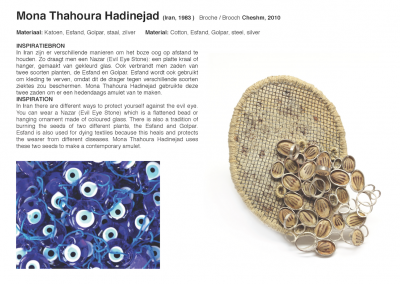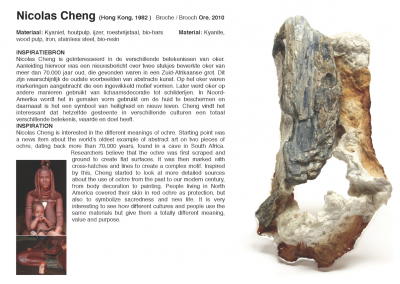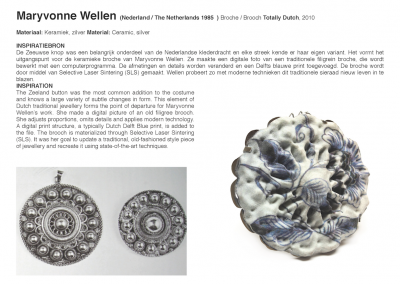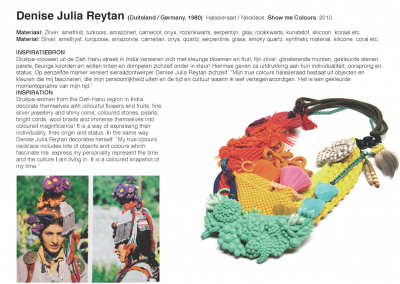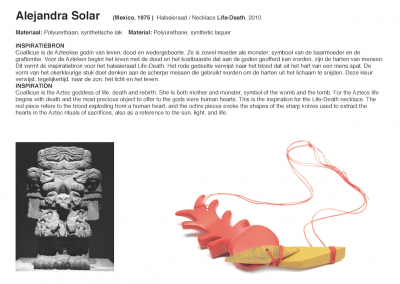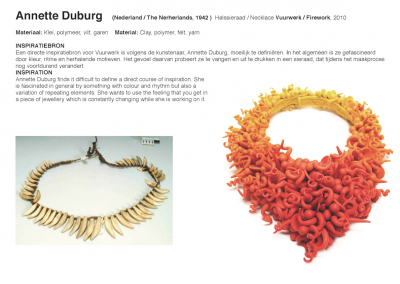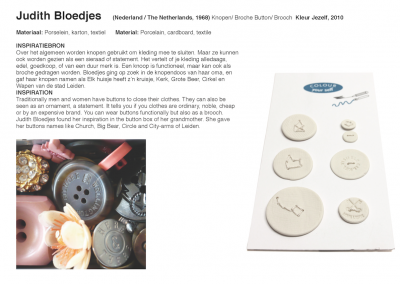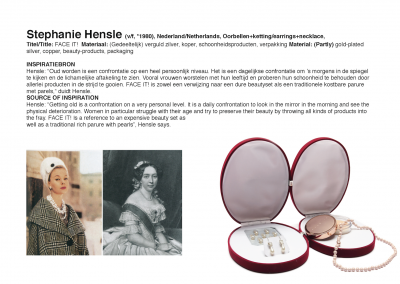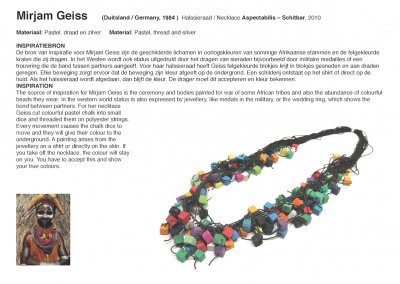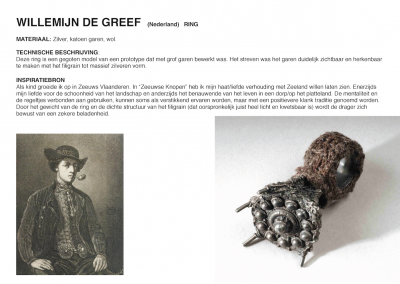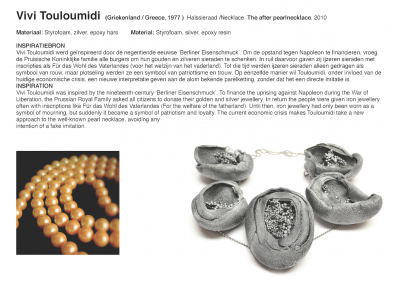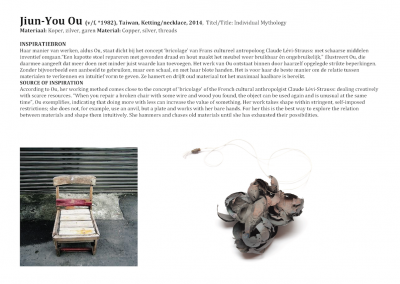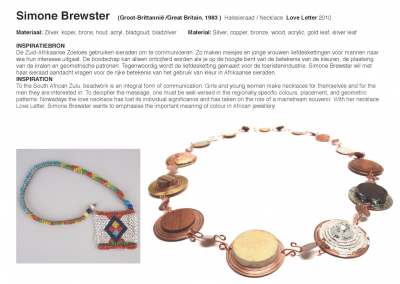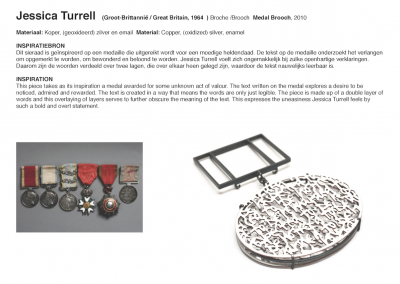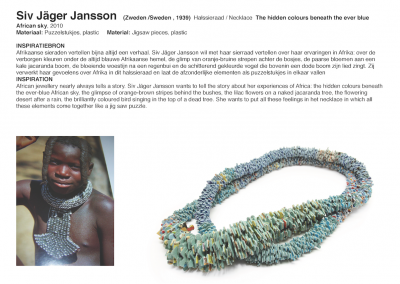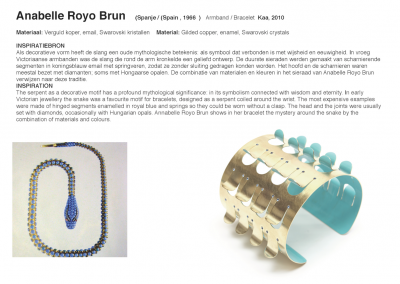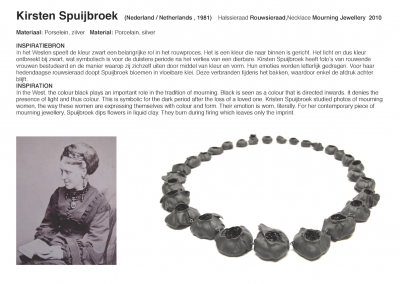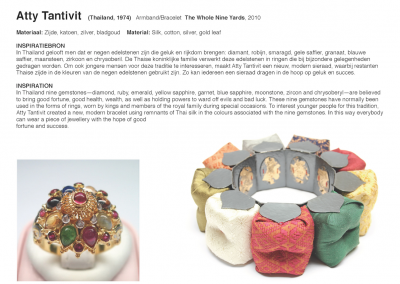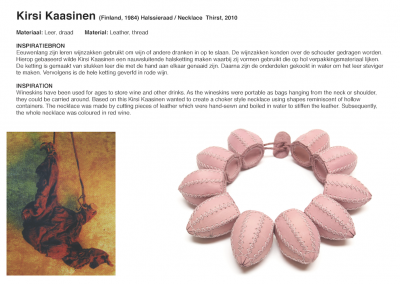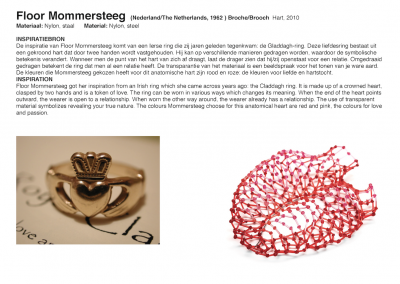2010 True Colours
Artists gave the theme a metaphorical rendering by literally giving form to one aspect of their own personality, in ways that were sometimes confronting, sometimes poetical. Other artists focussed on a social aspect; after all, society is rich in topical colour coding. Other examples of sources of inspiration are to be found in heraldry, folklore and science. True Colours also refers to dyes and pigments. For centuries, art history’s palette was determined by expensive mineralogical and biological pigments. The link between the theme ‘True Colours’ and contemporary jewellery design was obvious. From way back, the meaning and appreciation of jewellery have pre-eminently been determined by colour. From the use of gold or silver to enamel and mineralogical and biological stones: colour is a language. How rich this language is, became manifest during the seventies and eighties. The application of textiles and Perspex in jewellery led to a new idiom and use of colour; an important phase in the emancipation of contemporary jewellery design. True Colours is a distinct result of this development. The exhibition was a representative sampling of current jewellery design in which traces were to be found of the history, meanings, value, magic and power of the language of color. The deluge of entries resulted in the most colourful (literally as well as figuratively) exhibition in many years.
Marjan Unger, art historian and publicist
Theo Smeets, University of Applied sciences – Trier dept. gemstone & jewellery design campus Idar-Oberstein
AZIZ, fashion designer/artist
Eveline Holsappel, Curator applied art and design, Museum voor Moderne Kunst, Arnhem.
Chequita Nahar, jewellery designer, Coordinator Department Jewellery & Product Design, Academie
Astrid Berens, Director SIERAAD
The theme for the biennial international design contest New Traditional Jewellery is True Colours. This is the fourth edition of the contest and may said to have been very successful, with more than 300 entries of jewellery designers from 33 countries.
The pieces submitted were judged by a technical jury of six persons, each with their own background – teacher, jewellery designer, academic, curator and fashion designer.
An important aspect of New Traditional Jewellery is that the participants should find their inspiration in historical and/or ethnographic jewellery. The theme selected this year has a double meaning. It is about colour, literally, but also means ‘showing your colours’ or ‘showing your true nature’. The entries were representative of this dichotomy with pieces showing an outspoken use of colour, but also with an enormous ethnic variety.
It gave the jury a splendid opportunity to get an idea of what is happening at an international level in the field of contemporary jewellery design, with jewellers coming from countries like Finland, Iraq, Australia and Chile.
After some elaborate discussions the jury has selected the five winners listed below, among whom two students. While making the selection the jury aimed at diversity in order to show the various aspects within the theme of True Colours.
Winners
The jury was pleasantly impressed by this year’s powerful entries of the students, with surprising and original designs. The prizes for the students were awarded to
At first sight Serin Oh’s ring looks like a bronze nugget, coloured black, mounted on a classic ring. But upon closer inspection all kinds of jewellery and parts thereof can be distinguished, among which precious stones and a small angel, which have fused together. It is a reference to the costume jewellery that is sold in the shopping centres of Korea, mass-produced and no longer bearing any relationship to the history of Korea. Serin Oh pictures the confusion and identity crisis of modern Korea by fusing these trinkets to a whole.
The raw, almost grubby colour of the goatskin makes the small pink details stand out. She arrived at the colour pink after reading an article about primordial man using pink coloured fibres to decorate clothing as long as 35,000 years ago. Her brooch is an ode to her and our distant ancestors.
Penka Arabova’s green brooch was inspired by an old Bulgarian tradition where red and white cotton threads tied together are worn as pendants, brooches or bracelets. The colour red of these so-called Martenizas is symbolic of youth and the colour white for age, and wearing them brings health and happiness. For her brooch Arabova has used different colours and materials which she associates with the old tradition in her native country and in doing so created her own modern guardian against illness and misfortune.

